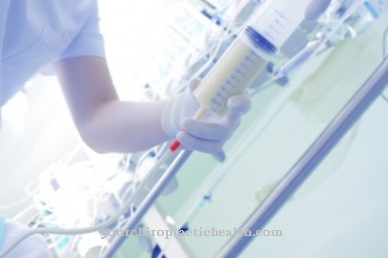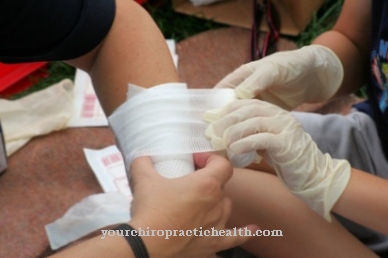Certain circumstances and diseases can mean that people are no longer able to eat manually. So that the body is supplied with all important nutrients, medical professionals can use a Nasogastric tube lay. In this way, the food goes straight into the digestive tract without the need for it to be broken down by the mouth.
What is a feeding tube?

Artificial nutrition should not only contribute to maintaining vital functions. At the same time, a nasogastric tube is a factor for improving health and quality of life. Before such a decision is made, however, a detailed discussion with the treating doctor is often necessary in order to clarify all ethical doubts.
If a patient is no longer able to take in food independently due to physical complaints, in most cases a specific solution is given first. This contains all the important nutrients. However, certain illnesses can be responsible for the fact that the entire swallowing process no longer works properly. In such a condition, the gastric tube is often the last resort. It is therefore suitable, for example, for people with swallowing paralysis, tumors in the area of the mouth and throat, or in the event of loss of consciousness.
Function, effect & goals
A gastric tube is suitable on the one hand for the administration of food, on the other hand the tube enables the removal of elements of the stomach contents. Such a process is used, for example, after poisoning to remove the substances from the body before digestion in the intestine continues. The nasogastric tube is a tube made of a soft material.
This usually measures 75 centimeters. How far the tube is inserted depends largely on the desired position and the size of the patient. Most hoses have a diameter between one and 13 millimeters. Gastric tubes can lead directly into the stomach or open into the duodenum or large intestine. While one end has holes through which the food enters the organism, specific devices can be connected to the other end. When pumping stomach acid or other contents, a suction device is attached here, for example. Inserting a feeding tube is usually perceived as uncomfortable, but not painful. The tube can be fixed either through the nose or through the mouth. In most cases, a nasogastric tube is used.
This is perceived as less annoying when speaking and can be attached better at the same time. In the case of fractures of the skull or other injuries to the head, the tube can often only be administered by mouth. If long-term artificial nutrition is unavoidable, the tube goes directly through the abdominal wall into the stomach. The gastric tube must find its way through the nose, throat and esophagus before it is placed in the intended location.
A nasogastric tube is particularly recommended for four medical cases. Various fluids can be removed from the stomach through the tube. This is necessary, for example, with an intestinal obstruction or because of gastric bleeding.
In this way, blood, gastric juice or stomach contents can be removed from the organism. If a diagnosis requires examination of the gastric juice, it can also be taken through a gastric tube for this specific purpose. Most often, however, doctors insert a nasogastric tube for artificial feeding of patients who, for various reasons, are no longer able to meet their nutritional needs independently.
The proportion of people using feeding tubes is increasing, particularly among people in older age groups or after accidents. The fourth reason for a tube feeding is to flush the intestines. If the patient suffers from poisoning, the bowel can be relieved in this way. The toxic substances are preferably pumped out in the stomach. If such a process can no longer be carried out, the treatment begins in the intestine.
You can find your medication here
➔ Medicines for stomach ailments and painRisks, side effects & dangers
Depending on the area of application and the nasogastric tube used, different complaints can occur. In general, however, the risk of complications from such a tube is very low. The insertion of the probe can be perceived as very uncomfortable. Some patients react with a gag reflex.
Further complications can arise, for example, during the insertion of the gastric tube. The main focus here is on the material of the hose. Poorly flexible materials show an increased risk of injuring mucous membranes, stomach, esophagus or intestines. However, because the material used has evolved over the past few years, it is mostly a flexible plastic that reduces the risk of injuries. In a few patients, the attending physician does not succeed in inserting it through the esophagus. Instead, the tube goes into the windpipe. When conscious, the patient usually responds with a cough reflex.
In the case of unconscious people, however, it is only possible to determine whether the gastric tube has been placed correctly by performing a retrospective examination. Other possible complications are possible irritation of the gastric mucosa. These occur mainly in the context of gastroscopy through a gastroscope. Contact can lead to irritation or injury. The gastroscope very rarely pierces the mucous membrane. In such a case, it cannot be ruled out that the contents of the stomach will penetrate into the surrounding tissue.
Such an injury often results in inflammation of the peritoneum. In addition to surgery, antibiotics are given. Generally, the risk of injury from a feeding tube is low. It is estimated that fewer than 1 patient in 100 suffer from undesirable side effects and side effects.



.jpg)









.jpg)

.jpg)
.jpg)











.jpg)